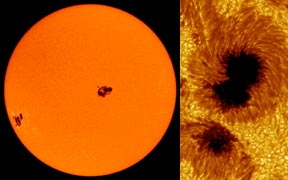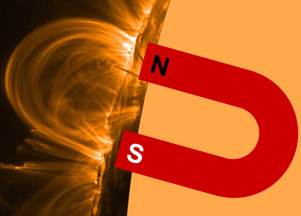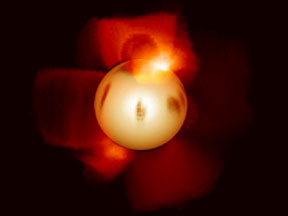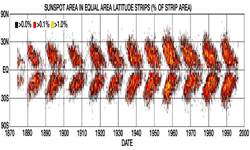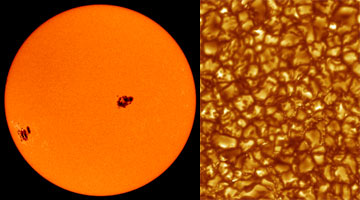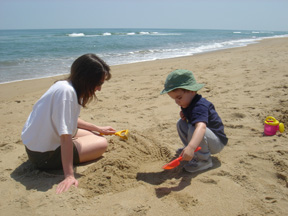Click on image for full size
Images courtesy SOHO (NASA & ESA) and the Royal Swedish Academy of Sciences.
Related links:
History of Sunspot Observations
Movie: Journey Beneath a Sunspot
Do Changes in Sunspot Numbers Affect Weather and Climate on Earth?
Animation: Rotating Sun with Sunspots
Activity: Graphing Sunspot Cycles
Activity: Tracking the Motion of an Active Sunspot Region
Activity: Plotting Locations of Active Regions on the Sun
Movie: Supercomputer Models Help Scientists Understand Sunspots
When Nature Strikes: Space Weather
When Nature Strikes: You Be the Solar Scientist! Classroom Activity
Sunspots
Sunspots are dark spots on the Sun. They may look small, but they are actually as bigas a planet like Earth or Mars!
Sunspots are "dark" because they are colder than the areas around them. Of course, they are not really cold like we think of cold! A large sunspot might have a temperature of about 3,700° C or 6,700° F!
Areas around sunspots called active regions on the Sun can lead to solar flares and Coronal Mass Ejections (CMEs for short). The solar activity of flares and CMEs are called "solar storms".
Sunspots can last for weeks or even months. The number of spots on the face of the Sun is not always the same, but goes up and down in a cycle. Over time, astronomers have used different instruments to look at how many sunspots are on the Sun, but remember that you should NEVER LOOK directly at the Sun!
Other stars have spots too. They are called "starspots".


